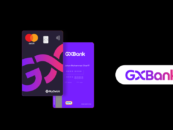As Malaysia prepares to hand out its first digital banking licenses, fintech innovators, incumbent banks and tech providers are sharing their views and predictions on what the industry will look like following this major liberalization push.
Speaking with Fintech News Malaysia, top executives from Axiata Digital, RHB Bank, Standard Chartered and banking software provider Temenos said they anticipate a shakeup of the banking sector, fueled by new business models and the pervasive use of cutting-edge technologies.
Khairil Abdullah, CEO, Axiata Digital, expects the new framework to encourage innovation and facilitate the development of innovative business models, all the while creating a level playing field so that every player has a fair and equal chance of succeeding.

Khairil Abdullah, CEO, Axiata Digital
“I really like the fact that it has these progressive elements that allow us to experiment and build products and services out of the technologies that we are deploying, but at the same time has all the risk controls that are necessary to ensure that we provide the services that meet the requirements and meet the customers’ expectations on their protection,” Khairil said.
“I’ve seen frameworks where they tend to promote incumbents to create digital outfits but this framework actually is quite fair because it not only allows the fellow incumbents to pursue digital propositions but also fintechs like ourselves to bid for it.”
Khairil’s company, alongside its partner RHB Bank, are amongst the 29 contenders for the five digital banking licenses to be issued early this year.
The consortium will leverage Axiata Digital’s experience in developing seamless digital lending products to address the underserved segments.
“The way we are doing it is first to start by drawing out the entire value chain of the process … and then go into ‘Jenga blocks’ mode … and start removing each individual block to see when the whole thing will collapse … because every step you remove, you are simplifying the process or removing costs in the operations,” Khairil explained.
“What you get as a result is a product or a service that has super low cost to serve, and because the technology is leveraged, the marginal cost of doing some of those individual steps might be close to zero. That would allow us to develop products and services that actually are at an affordable price point for the underserved segment.”
Digital financial services can help improve financial inclusion and allow banking providers to address the needs of the underbanked, said Dr. Siew Chan Cheong, Chief Strategy Officer, RHB, a segment that currently counts about 10 million customers.

Dr Siew Chan Cheong, Chief Strategy Officer, RHB –
“There is quite an urgent need for Malaysia to provide good banking access and help them improve their lives,” he said.
“Typically, to cater to the underserved, it requires a sustainable business model to support that. The current banking model hasn’t been able to fulfill that objective. Therefore, we need a new way of doing banking.”
“The decade of digital banking”
Similarly, Sammeer Sharma, Head of Consumer, Private and Business Banking, Standard Chartered Malaysia, said the new regulation will bring about “a lot more vibrancy to the market.”

Though Standard Chartered isn’t pursuing a digital banking license in Malaysia like it had in Hong Kong and Singapore, Sammeer said the bank is embracing a twofold digital strategy centered around transforming its core and digital partnerships.
As an example, he cited Standard Chartered’s US$500 million deal with buy now, pay later (BNPL) leader Atome Financial, a ten-year partnership unveiled in October 2021 that focuses on rolling out BNPL services and digital lending products in Malaysia, Indonesia, Singapore and Vietnam.
Jean-Paul Mergeai, Member of the Executive Committee President International Sales, EMEA and APAC, Temenos, called this era “the decade of digital banking,” noting that the phenomenon has been sweeping across Southeast Asia, embraced by the region’s young and digital natives, and accelerated by the COVID-19 pandemic.

Jean-Paul Mergeai, Member of the Executive Committee President International Sales, EMEA and APAC, Temenos
“By 2040, it’s projected that 1 billion relatively young and extremely digitally savvy people will demand financial services across Southeast Asia,” Jean-Paul said.
“This paired with regulators fostering innovation and the number of entrants in the digital financial services space promises to push Malaysia and Southeast Asia as a whole to the forefront of a blooming digital economy.”
To facilitate the entry of new players, Bank Negara Malaysia introduced in late-2020 a licensing regime for digital banks that comes with a simplified regulatory framework applied during the initial stage of operations.
The strategy aims for licensees to demonstrate their viability and sound operations, and for the central bank to observe their performances and attendant risks.
“We decided to customize the existing licensing framework to attract new entrants while taking a balanced approach to ensure that the adapted framework achieves the benefits that we want while managing the risks that we are considered with,” said Suhaimi Ali, Director, Financial Development and Innovation Department, BNM.

Suhaimi Ali, Director, Financial Development and Innovation Department, BNM
“We decided to introduce what we call a ‘foundational phase’ where in the first three to five years of operations, digital banks are subjected to an asset limit of MYR 3 billion to minimize the risk to stability.”
To watch the full video, visit our Youtube Page








